
|
![]()
Greatest Films of the 1960s
1960 | 1961 | 1962 | 1963 | 1964 | 1965 | 1966 | 1967 | 1968 | 1969
Title Screen Film Genre(s), Title, Year, (Country), Length, Director, Description 



Billy Budd (1962, UK), 125 minutes, D: Peter Ustinov
Based upon Herman Melville's short 1924 novel, Ustinov's film was a compelling adventure drama and war film. In 1797, Britain and France were warring nations in the Napoleonic Wars. Innocent, honest, good-natured and naive British merchant seaman Billy Budd (Terence Stamp) was impressed to serve on the HMS Avenger, and soon became very popular and charismatic among the crew. The Royal Navy's ship was captained by Edwin Fairfax Vere (Peter Ustinov), assisted by the cruel and sadistic Master of Arms John Claggart (Robert Ryan). During an incident on board the ship, Budd aided a sick crewman named Enoch Jenkins (Ronald Lewis), who ultimately fell to his death after being ordered by Claggart to report to his post. During an inquiry into the death, held in the Captain's cabin, Claggart - who had developed a vengeful hatred for Budd, perjured himself when he falsely accused Budd of conspiring and organizing a mutiny. When Budd attempted to defend himself, he stammered (under the pressure) and struck out at Claggart - and killed him with one blow (witnessed by the captain). Budd faced a court-martial hearing, presided over by three judges: 2nd Lieutenant Julian Radcliffe (John Neville), Gunnery Officer Steven Wyatt (David McCallum), and 1st Lieutenant Philip Seymour (Paul Rogers). The judges fully supported Budd during deliberations - they believed that Claggart had falsely accused Budd of mutiny, and they thought that Claggart's death was merely an accident. Although the three wished to exonerate Budd, Captain Vere (who wasn't eligible to be one of the judges) then convincingly intervened, and argued that the law explicitly stated that an impressed crew member had to face the death penalty if he struck (and killed) an officer - there couldn't be any exceptions. Budd was convicted, and as he was hanged from the yardarm, Budd heroically cried out: "God bless Captain Vere," causing the guilt-ridden Captain to abdicate and lose command of his ship. The crew was on the verge of mutiny - at the same time that a French vessel attacked the HMS Avenger and set it on fire, and Captain Vere was crushed and killed by falling rigging.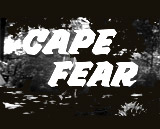

Cape Fear (1962), 105 minutes, D: J. Lee Thompson


Days of Wine and Roses (1962), 117 minutes, D: Blake Edwards




Dr. No (1962, UK), 110 minutes, D: Terence Young



Gypsy (1962), 143 minutes, D: Mervyn LeRoy
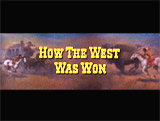

How the West Was Won (1962), 165 minutes, D: John Ford, Henry Hathaway, George Marshall



La Jetée (1962, Fr.) (aka The Jetty, or The Pier), 28 minutes, D: Chris Marker
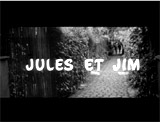


Jules et Jim (1962, Fr.) (aka Jules and Jim), 104 minutes, D: Francois Truffaut
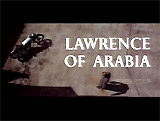



Lawrence of Arabia (1962, UK), 220 minutes, D: David Lean
Lean's picture was one of the greatest epic films of all time, and a Best Picture winner, with rich cinematography of the immense desert. Lawrence of Arabia was one of the earliest films to showcase the enormity and stark beauty of the Saharan desert. Its magnificent Super Panavision 70 mm scope and poetic desert imagery were captured within a spectacular story of a larger-than-life, idealistic adventurer. The sweeping, breath-taking, cinematic biographical epic followed the true-life exploits of a famed British officer, T. E. Lawrence (Peter O'Toole in his first major film), and his transformation from an enigmatic eccentric to a hero in WWI Arabia. Assigned there, he courageously united the warring Arab fractions into a guerrilla front to battle the Turks, Germany's allies. Included were the great scenes of Omar Sharif's riding out of a shimmering desert mirage, the jump-cut from a lit match to a brilliant desert sunrise, and the assault on Akaba.



Lolita (1962, UK), 152 minutes, D: Stanley Kubrick
Director Stanley Kubrick's sixth film - a brilliant, sly adaptation of Vladimir Nabokov's celebrated yet controversially-infamous and banned 1955 novel, was about a middle-aged man's unusual, doomed sexual passion/obsession for a precocious, seductive "nymphet" girl. Academic professor Humbert Humbert (James Mason) lusted after under-age fourteen year-old Dolores "Lolita" Haze (Sue Lyon), daughter of frumpy Charlotte (Shelley Winters), although the film began with the conclusion - the aftermath of an orgy and Humbert's murderous confrontation with rival pedophile Clare Quilty (Peter Sellers).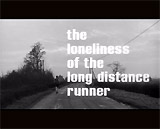


The Loneliness of the Long Distance Runner (1962, UK), 104 minutes, D: Tony Richardson

Long Day's Journey Into Night (1962), 134-174 minutes, D: Sidney Lumet


The Longest Day (1962), 180 minutes, D: Andrew Marton, Ken Annakin, Bernhard Wicki


The Man Who Shot Liberty Valance (1962), 118 minutes, D: John Ford
Director John Ford's B/W, studio-bound, nostalgic masterpiece from Paramount Studios about the passing of the Old West (after its taming) was one of his last westerns. It had been adapted by Dorothy M. Johnson's 1953 short story. The film's plot opened in the year 1910, when respected, distinguished-looking, elderly and timid Senator Ransom (or "Ranse") Stoddard (James Stewart) was journeying westward by train with his wife Hallie (Miles) from their home in the East (Washington, DC). They were returning to the frontier town of Shinbone (either Arizona or Colorado Territory) where they used to live, to attend the funeral and pauper's burial of Stoddard's old rancher friend Tom Doniphon (John Wayne), who ended his life as a recluse and derelict. In the undertaker's office, Senator Stoddard was interviewed by local newspaper editor Maxwell Scott (Carleton Young) about his return to the town, and about his life and career in the wild town. The remainder of the story was Stoddard's flashback to 25 years earlier, about how he had allegedly become a legend and was known as "The Man Who Shot Liberty Valance." As an idealistic, eastern law school graduate, he had first arrived in Shinbone as a young, idealistic pacifistic attorney at law from the East Coast to set up a law practice. He continually spoke about his relationship with tough, rugged and rugged homesteader and gunslinger Tom Doniphon - who had protected Ransom (famously referred to as "Pilgrim") from continual taunting from outlaw Liberty Valance (Lee Marvin). Stoddard vowed that he was non-violent, and was relying on his law books to bring justice to the town, but it turned out to not be enough. Doniphon decided to teach Ransom to shoot - and then everything climaxed with a dramatic shootout-showdown on the dusty street against Valance, who taunted and then wounded Ransom in his right arm. Then, Valance aimed his gun and vowed: ("This time, right between the eyes") but miraculously, Random - left-handed - appeared to shoot Valance dead. He was accorded fame and credit for taming the West and civilizing the town, but it was then revealed that Doniphon had actually killed the tyrannical outlaw. A few weeks later during a 'flashback-within-a-flashback,' Doniphon privately informed him about the real truth of the legendary gunfight - Ransom never shot Liberty Valance. At the exact moment of the shooting, Doniphon shot Valance to sacrificially protect the love of his life Hallie from heartbreak (knowing Stoddard would die in a face-off), and also for the greater good of the territory poised for statehood. The bitter sad, and tragic result of Doniphon's killing of Liberty Valance was that Ransom took Hallie away as his wife - the woman Doniphon had loved in silence and had hoped to marry. A drunken Doniphon staggered home and set his own house on fire by tossing an oil lamp into it, torching a room addition intended for Hallie. For the remainder of his life as a politician, Ransom was mistakenly known as "The Man Who Shot Liberty Valance." At the end of Stoddard's flashback after finishing the true tale about his past, editor Scott delivered a famous line of dialogue in the film's conclusion as he ripped up his novice reporter's notes and refused to publish the truth of the story: (Ransom: "You're not going to use the story, Mr. Scott?" Scott: "No, sir. This is the West, sir. When the legend becomes fact, print the legend").


The Manchurian Candidate (1962), 126 minutes, D: John Frankenheimer
Director John Frankenheimer's complex, realistic depiction of brainwashing and its commentary on the paranoid 50s era of McCarthyism was a frightening, satirical psychological thriller. It was based on Richard Condon's 1959 novel, and adapted by George Axelrod. At the time of its release, both the Cuban Missile Crisis and the Bay of Pigs (plus the uptick in the conflict in Vietnam) were on viewers' minds. Director Jonathan Demme's remake of the political thriller in 2004 starred Denzel Washington, Liev Schreiber, Jon Voight, and Meryl Streep, and replaced the Korean War context with the 1991 Gulf War. The original film opened on a US Army platoon fighting in the Korean War that was ambushed, captured and then brainwashed by Communist North Koreans in Manchuria. [Note: The fact that the platoon had been brainwashed wasn't fully revealed until later.] Upon the repatriated soldiers' return to the US, two of the veterans Major Bennett Marco (Frank Sinatra) and Corp. Alan Melvin (James Edwards) were haunted by surrealistic, recurring nightmares about their frightening incarceration, brain-washing by a Korean agent-puppetmaster Dr. Yen Lo (Khigh Diegh), and their witnessing of the murder of fellow platoon members by hero Sgt. Raymond Shaw (Laurence Harvey). Upon everyone's recommendation, Shaw was awarded the Congressional Medal of Honor for his bravery, exemplified by a sentence repeated verbatim by his comrades: "Raymond Shaw is the kindest, bravest, warmest, most wonderful human being I've ever known in my life." Marco slowly began to realize that Shaw was being controlled and manipulated. Shaw's ruthless handler and spy-agent was revealed to be his "Queen of Diamonds" ambitious mother (Best Supporting Actress-nominated Angela Lansbury). She was the diabolical wife of right-wing, McCarthyite demagogue Senator John Iselin (James Gregory) - Shaw's stepfather who had plans to be nominated and ultimately attain a position in the White House. As part of his programming, after Shaw was stage-managed and manipulated by his perverse mother to see the Queen of Diamonds playing card during a game of solitaire, he would guiltlessly follow orders, as part of the sinister Communist plot to assassinate specific political enemies. The first victim of mind-controlled operative Shaw was liberal publisher Holborn Gaines (Lloyd Corrigan). Then after being triggered again, he cold-bloodedly murdered his father-in-law, liberal Senator Thomas Jordon (John McGiver), and his own pretty young wife Jocelyn (or "Jocie") Jordon (Leslie Parrish), the Senator's daughter. As the film built to a tense climax, Marco uncovered the programmed killer's fiendish plans to assassinate the Iselins' rival presidential candidate nominee about to deliver an acceptance speech at a political convention held in Madison Square Garden. Marco was able to sprint to the top of the arena (during the playing of the 'Star Spangled Banner'), where he confronted the trance-like sniper Shaw in a small spotlight booth ready to fire at his presumed target. At the last moment, Shaw moved his telescopic gunsight over both his mother and Senator Iselin and killed them, and then suicidally turned the gun on himself. He ironically died as a true hero, with his medal around his neck.

The Miracle Worker (1962), 107 minutes, D: Arthur Penn
Arthur Penn's biographical drama was about Helen Keller, born blind and deaf, who was able to make a breakthrough by the understanding and dedicated efforts of her tutor Annie Sullivan. In 1957, Penn directed a TV version for Playhouse 90, and a revised version of the play also opened in October 1959 on Broadway (with the two main stars who were in the 1962 film version). Both interations were based on the original source materials derived from Helen Keller's own 1903 autobiography, The Story of My Life. Two made-for-TV movies followed in 1979 and 2000. The 1962 film was a financial failure and made only $2.5 million on a budget of $500,000, although it was a major critical success for both director Penn and the two main actresses. In the opening film scene came the disturbing moment when mother Kate Keller (Inga Swenson) realized that her baby daughter Helen was both deaf and blind after a severe case of scarlet fever, and she screamed out in horror for her domineering husband Captain Arthur Keller (Victor Jory). Following the helpless Kate's continual worries about how to teach young Helen to act and communicate, the distraught parents decided to contact the Perkins School for the Blind in Boston for assistance. In 1887 in Tuscumbia, Alabama at the Keller home, a physical and mental battle of wills began between newly-arrived, partially-blind teacher Annie Sullivan (Oscar-winning Anne Bancroft), one of the school's former students, and 7 year-old pupil Helen Keller (Oscar-winning Patty Duke). During one of Helen's first sign-language lessons, the obstinate Helen struggled to be taught how to spell C-A-K-E, and D-O-L-L. The determined Annie needed to break Helen's resistance, and wouldn't tolerate her scratching or screaming. During a particularly severe temper tantrum in the dining room, Annie refused to have Helen help herself from her plate without a fork. After a few tough weeks spent alone with Helen in a detached garden house on the premises, Annie was able to teach the spoiled Helen personal care and table manners (how to dress herself and eat with a fork). Then, Annie demanded that she have full control of Helen from the overindulgent parents (especially pampering Kate), in order to properly train her. The alternative was having Helen committed to an asylum - gruesomely described by Annie. Annie continued to teach the high-spirited and resistant Helen that things have names, such as an egg hatching a chick, and in one of her lessons, she taught about Helen breaking through her shell. Annie's most climactic moment of triumph came in the water-pump scene when Helen learned to use sign language (she suddenly realized that the name of a thing could be spoken), when she first spoke "wah - wah" with the assistance of her teacher, associating sounds and words with actual named objects. She raced around to spell the names of touchable objects, such as tree, porch, and bell, and then 'mother.' Helen was embraced by her jubilant parents. In the concluding scene, Helen gave her 'teacher' Annie a very gentle goodnight kiss. Annie responded by speaking and signing: "I love Helen" - and rocking her back and forth to the lullaby tune "Hush, Little Baby."
Mondo Cane (1962, It.) (aka A Dog's Life), 105 minutes, Paolo Cavara, Gualtiero Jacopetti, Franco E. Prosperi
This popular Italian-made globe-trotting, amateurish "shockumentary" was luridly advertised as a travelogue of "truth stranger than fiction" - with xenophobic glimpses of dark-skinned, bare 'savages' engaged in grotesque and bizarre religious rituals, tribal ceremonies, animal cruelty, and lurid scenes of human perversity! The film was castigated as pornographic, trashy and vulgar, although by today's standards would be considered very tame. Often faked, reconstructed or manipulated footage (with misleading narration) included the beheading of a horde of bulls and the mass head-bashing of some pigs in New Guinea, force-feeding of native girls to make them more marriageable and fertile contrasted with weight-loss techniques, Singapore's "House of Death", self-flagellation, hula dancing in Hawaii, the eating of dog in Thailand contrasted with a wealthy pet cemetery in the US, pig-suckling, and environmental catastrophe - the effects of radiation and atomic testing on a small island. The film inspired a series of sequel "Mondo" films (or "shockumentaries") and dozens of imitators - it was the progenitor of "snuff" films, execution videos, hard-core pornography, and even reality TV.

The Music Man (1962), 151 minutes, D: Morton Da Costa
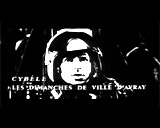
Sundays and Cybele (1962, Fr./Austria) (aka Les Dimanches de Ville d'Avray), 110 minutes, D: Serge Bourguignon 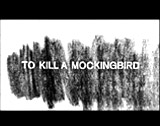

To Kill a Mockingbird (1962), 131 minutes, D: Robert Mulligan
This poignant adaptation of Harper Lee's best-selling novel by screenwriter Horton Foote was set in small-town 1930s Alabama. It was narrated by the adult voice of Kim Stanley as a coming-of-age, autobiographical story, whose innocence about racial bigotry and intolerance was changed forever. The film compellingly wove together the children's nightmares, personified by the mute, mentally-retarded Boo Radley (Robert Duvall in his screen debut) with the prejudiced hatred of the bigoted townspeople. In this inspiring courtroom drama, always rated as one of the finest, Scout Finch (Mary Badham) living in Maycomb, Alabama flashbacked as an adult to her 1930s youth, where her family included her widowed, lawyering father Atticus Finch (Gregory Peck), and her brother Jem (Phillip Alford). Neighboring them was a mysterious recluse that they named Boo Radley (Robert Duvall). The Lincolnesque, compassionate attorney Atticus took the impossible, and unpopular task of defending black man Tom Robinson (Brock Peters) on false charges of beating and raping a white-trash woman, Mayella Ewell (Collin Wilcox). During the trial, Mayella claimed that Tom had helped her with chores, then attacked her in the house. Her racist, poor, alcoholic, redneck father Robert E. Lee "Bob" Ewell (James Anderson) claimed he saw the attack. Tom testified that Mayella often asked him over, and due to her perceived loneliness and that he felt sorry for her, he often assisted her. On this occasion, she grabbed and kissed him, sexually attracted to him. During the trial, Atticus argued persuasively that left-handed, angered Bob struck Mayella, causing facial injuries on one side of her face. One-handed and right-handed Tom couldn't have caused the bruises. The all-white jury convicted Tom, and shortly after when he tried to escape, he was shot and killed by a deputy. Ewell remained angered with Atticus, spit in his face, and then attacked Jem and Scout as they walked home one night from a school event. Boo came out of nowhere, and stuck a knife in Ewell's belly, and saved them. The Sheriff Heck Tate (Frank Overton) decided to hush the murder and claim that Ewell fell on his own knife, thereby saving Boo (from being killed like a mockingbird).




What Ever Happened to Baby Jane? (1962), 132 minutes, D: Robert Aldrich
Robert Aldrich's great psychological thriller, black comedy, and over-the-top camp classic was this great trashy melodrama - with the bizarre (and sole) pairing of two legendary -- and rival -- screen legends in a gothic, macabre, Grand Guignol horror film. The screenplay, by Lukas Heller, was based on Henry Farrell's novel Baby Jane (who also authored the novel Hush... Hush, Sweet Charlotte). The two main characters were a grotesque Baby Jane Hudson (Bette Davis at 54 years of age), a former vaudeville child star now too old for acting, and her paralyzed invalid sister Blanche (Joan Crawford) from a mysterious, career-ending car accident (for which Jane was blamed but never charged). Blanche was also a former movie star. The two lived together in a gloomy, crumbling mansion in Los Angeles. Pasty white-faced Jane, whose career faded long ago, was now a deranged alcoholic, and vengefully bitter and jealous toward her wheelchair-bound sister secluded in an upstairs bedroom. Enmity worsened when a local TV network aired a marathon tribute to Blanche Hudson movies, and Jane learned that Blanche was planning to sell the mansion and put her in a sanitarium. There were many stunning scenes and excessive performances, particularly Jane's relentless tormenting of Blanche by serving an ex-pet and roasted rat for "din-din," and the sequence of Jane garishly dressed up as a little girl as she was being coached by impoverished pianist and musical director Edwin Flagg (Victor Buono in his film debut) for an improbable comeback as she croaked: "I've Written a Letter to Daddy." In the concluding beach scene finale, a past secret was revealed to Jane and she replied: "You mean, all this time we could've been friends?" It was revealed that Jane hadn't caused the accident after all. In fact, Blanche had been planning to kill Jane, but her plan backfired. The film's ending echoed the beginning when Jane purchased two strawberry ice cream cones and then insanely spun, pirouetted and danced - drawing a curious circle of people around her to fulfill her craving desires.